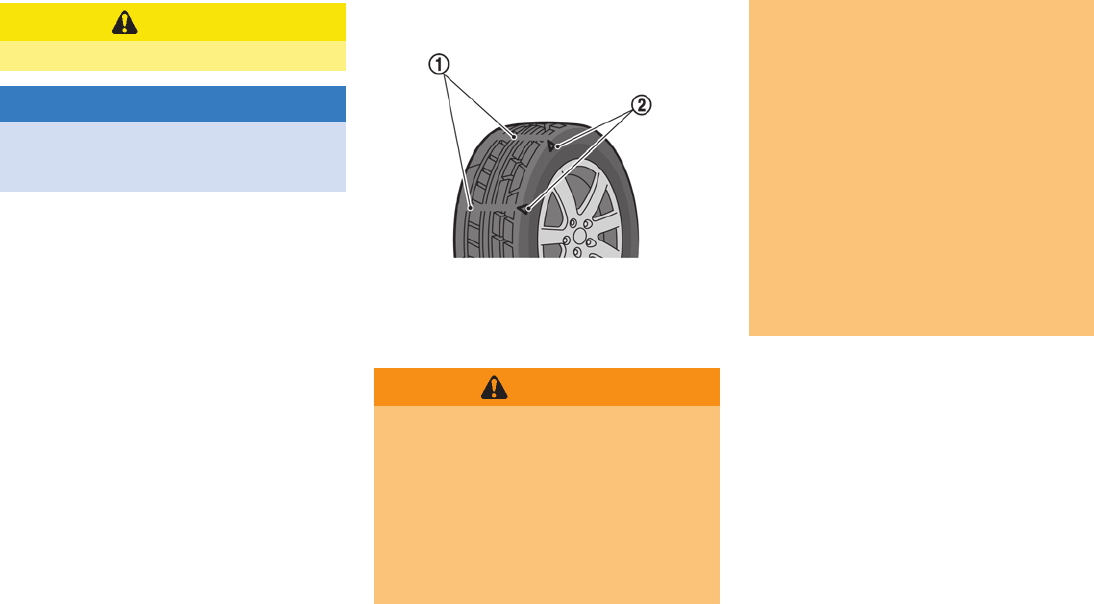
Black plate (282,1)
Model "R35-D" EDITED: 2009/ 3/ 11
CAUTION
Do not use tire chains on dry roads.
NOTICE
Never install tire chains on a punctured
run-flat tire, as this could damage your
vehicle.
Do not drive with tire chains on paved roads that
are clear of snow. Driving with chains in such
conditions can cause damage to the various
mechanisms of the vehicle due to some
overstress.
CHANGING WHEELS AND TIRES
Tire rotation
Tires cannot be rotated because your
vehicle is equipped with different sized
tires in the front and rear.
1. Wear indicator
2. Location mark
Tire wear and damage
WARNING
. Tires should be periodically in-
spected for wear, cracking, bul-
ging or objects caught in the
tread. If excessive wear, cracks,
bulging or deep cuts are found,
the tire(s) should be replaced.
. The original tires have built-in
tread wear indicators. When the
wear indicators are visible, the
tire(s) should be replaced.
. Tires degrade with age and use.
Have tires, over 6 years old
checked by a qualified techni-
cian because some tire damage
may not be obvious. Replace the
tires as necessary to prevent tire
failure and possible personal
injury.
. For additional information re-
garding tires, refer to “Important
Tire Safety Information” (US) or
“Tire Safety Information” (Cana-
da) in the Warranty Information
Booklet.
Replacing wheels and tires
When tire replacement is required, replacing
tires as a set of f our with new tires is
recommended. However, if a tire is punctured
or damaged, it may be possible to replace only
the damaged tire. Determining whether one tire
or a complete set of tires should be replaced is
based on a number of factors including tire wear
and condition. Contact your GT-R certified
NISSAN dealer. They can recommend if an
individual tire or a complete set should be
replaced.
When replacing a tire, use the specified size,
8-36 Maintenance and do-it-yourself


















